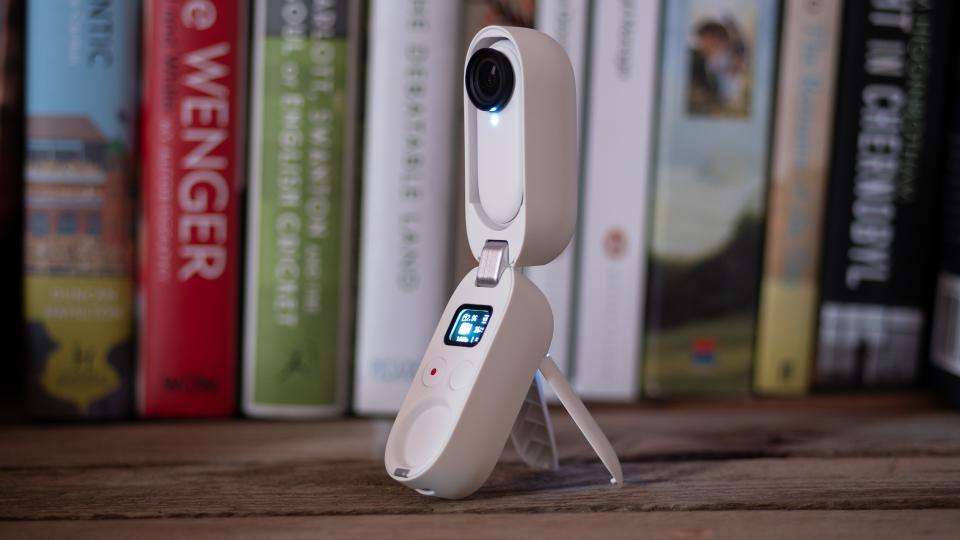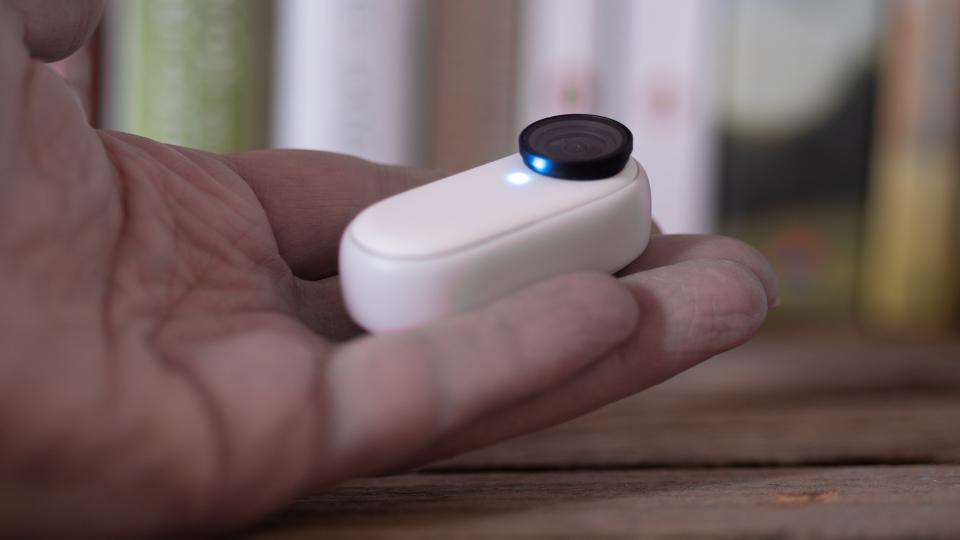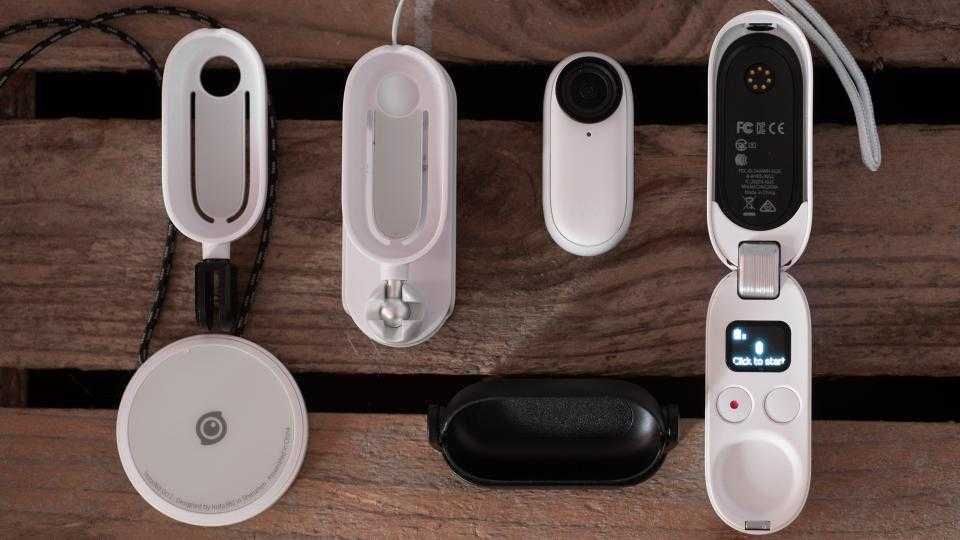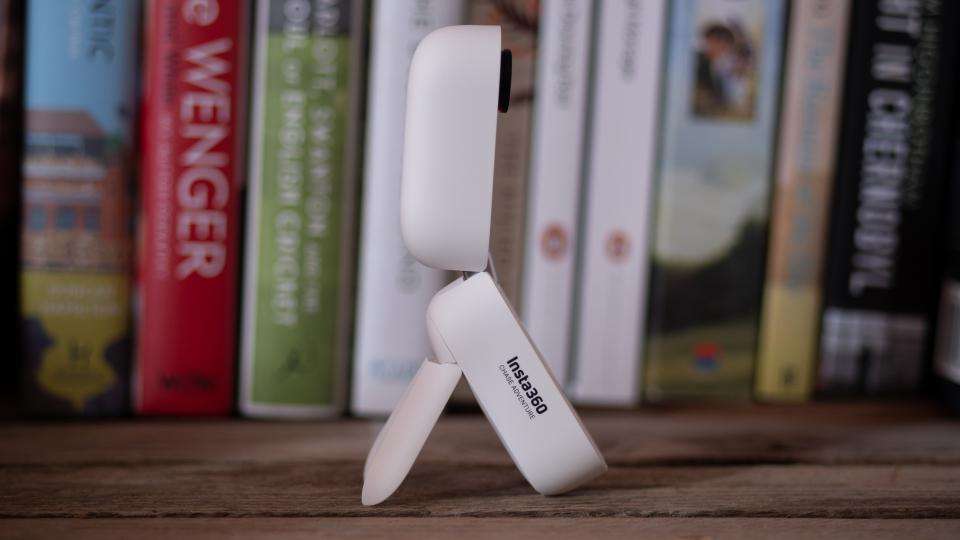Insta360 is best known for its 360-degree cameras but the new Insta360 GO 2 sees it cement its hold on another action-camera niche: the ultra-compact sector.
As small as your thumb and light enough to clip magnetically to your shirt, the new Insta360 GO 2 builds on the original GO camera and significantly improves usability and image quality.
READ NEXT: These are the best action cameras to buy right now
Insta360 GO 2 review: What do you get for the money?
Just like the first GO, the Insta360 GO 2 is a compact, thumb-sized action camera. It measures a mere 24 x 21 x 53mm and at just 27g is so light that it can be mounted magnetically to your clothes.
It’s slightly larger than the original Insta360 GO but not by much and, just like its predecessor, it comes with a pocket-size charging case you can use to boost the camera’s runtime from 30 minutes up to a maximum 150 minutes.

For something this small, the GO 2 is a remarkably capable camera in its own right, too. Its 2,688 x 2,688 pixel sensor can output 1440p footage (2,560 x 1,440) at frame rates up to 50fps and bitrates up to 80Mbits/sec, a big upgrade on the original GO’s 1080p at 25fps.
The GO 2 can also capture slow-motion clips in 1080p at 120fps, timelapse and hyperlapse clips in 1440p at 30fps and HDR footage in 1440p at 24fps. Plus, it can shoot with Insta360’s trademark FlowState electronic stabilisation, complete with horizon levelling, to create ultra-smooth shots that look like they were captured with a mechanical gimbal.
It’s the charging case that represents the biggest upgrade over the original GO, however. The original Go needed to be physically plugged into your phone in order to sync video clips. The nature of the connection also meant you had to remove your phone case to do it, which was a faff.
Now, the case charges via USB-C and pairs over Wi-Fi, like the rest of Insta360’s action camera lineup. Not only that, but it also doubles as a remote control. Open up the case and in the bottom you’ll find a small display and a pair of buttons. These allow you to start and stop recording as well as change settings without having to open up the app on your phone. The remote control facilities can be used whether the camera is inside or outside its charging bay.

Handily, the charging case can also be used as a mini-tripod, although the foldable legs do feel a touch on the flimsy side. For alternate mounting options, there’s a standard tripod thread on the end of the case that allows you to mount the camera to one of Insta360’s “invisible” selfie sticks, or a regular tripod or monopod.
The Insta360 GO 2 also maintains the appeal of the original, especially when it comes to the camera’s magnetic mounting system. With a strong magnet built into the back of the camera, it will stick it to all sorts of surfaces, but you’ll likely use the selection of mounts supplied in the box most of the time.

Included is a circular pendant that you hang around your neck and behind your shirt, providing a metallic surface on which to “wear” the camera. There’s a “pivot stand” with a sticky pad that lets you attach the camera to smooth surfaces like a car window or helmet and also a clip mount for attaching the camera to a bag strap or the peak of a cap. You'll also be able to buy a two-pronged mount for use with traditional GoPro-style accessories.
Insta360 GO 2 review: What’s it like to use?
The original Insta360 GO might have been small and easy to mount but it was fiddly to use out in the field. The only way to control it was to use the single “button” built into the body of the camera to start and stop recording. I often found the action of the button to be a little mushy, often leaving me unsure as to whether I’d started recording or not.
The Insta360 GO 2 improves on that in pretty much every way. First, the button provides a far more positive click, making it easier to tell if you’ve pressed it successfully. Second, the vibration is stronger, so even if you’re unsure about the button press, you can still tell if you’re recording or not.

And, third, you have the remote control in the case, which not only allows you to start and stop recordings but also displays the clip duration on the small OLED screen. All in all, this is a huge upgrade to useability and, in my view, it completely changes the GO 2 as a practical proposition.
In other respects, it’s the app that governs how the camera handles, and this too has improved dramatically since the first GO camera was released. Footage is now transferred via Wi-Fi direct, which is far more convenient than before and, once you’ve got the footage into your phone, there’s a huge variety of things you can do with the clips, from changing the framing to speeding up and slowing down video to adding special effects and filters.
Editing clips together in the app remains a bit of a pain, though, and there are some odd quirks you’ll have to get used to (who thought it was a good idea to swipe left on a clip to delete it?) so there is still some room for improvement.
READ NEXT: These are the best action cameras to buy right now
Insta360 GO 2 review: How good is the image quality?
With the boost in resolution and bitrate over the original GO, the GO 2’s video looks pretty good. Even in low and marginal light, noise isn’t overly distracting and image quality in daylight is a huge step up.
Colours are richer and more natural to the eye, details look sharper and footage has less propensity to blow out the highlights in a scene. Not only that but image stabilisation is also vastly improved with walking and cycling footage looking so smooth it could have been recorded on a gimbal.
In fact, it’s only more violent movements – while running or jogging – that faze Insta360’s FlowState stabilisation and, even here, it does a far better job of smoothing out the bumps and jolts than the original Insta360 GO camera. There’s even horizon levelling built-in, so you don’t have to worry about getting the camera dead level in its mount.
READ NEXT: The best action cameras to buy right now
Insta360 GO 2 review: What don’t we like about it?
Insta360’s latest tiny action camera is a remarkable thing but some elements do still frustrate.
Battery life is short in comparison with regular GoPro-style action cameras. The camera itself will only record up to 30mins (1440p at 30fps with basic stabilisation) in a single setting before needing a top-up and that falls even further if you have FlowState stabilisation enabled. That’s quite short compared with around two hours for a GoPro Hero 9 Black.
You can, of course, pop it back in the case for a top-up if it runs dry while you’re out and about. It takes 23 minutes to charge to 80% and 35mins to fully charge from empty. Plus, you can keep recording while it’s in the case up to a total run time of 150 minutes.
Another limitation is that there isn’t an awful lot of storage in the camera itself and there’s no microSD slot for expandability. All you get is 32GB which means with standard video at 1440p and 50fps, you’re going to run out after a total of 112 minutes, while with FlowState stabilisation turned on there’s only space for around 57 minutes of footage.
Finally, there are some usability issues that Insta360 really does need to iron out. In particular, it should really make it more clear that you need to enable the camera’s “Pro” mode in order to access horizon levelling and the superior FlowState stabilisation.
Normally, I’d expect a pro mode to refer to the ability to take more control over settings or, in more advanced cameras, record in flat “LOG” colour. It’s very, very confusing.
READ NEXT: The best action cameras to buy right now
Insta360 GO 2 review: Should you buy it?
These gripes aren’t major problems but the real question is, at this sort of price, why wouldn’t you choose a camera like the GoPro Hero 8 Black. The GoPro is cheaper than the Insta360 GO 2, records video at up to 4K at 60fps and it has better battery life and the ability to fit whatever capacity of microSD card you want.
If you’re prepared to work around the niggles, though, there aren’t any action cameras as small as the GO 2 that can match the quality of its video footage and its FlowState stabilisation system. If size is important to you and you just don’t get on with bulkier, heavier action cameras, it’s an impressively capable option.